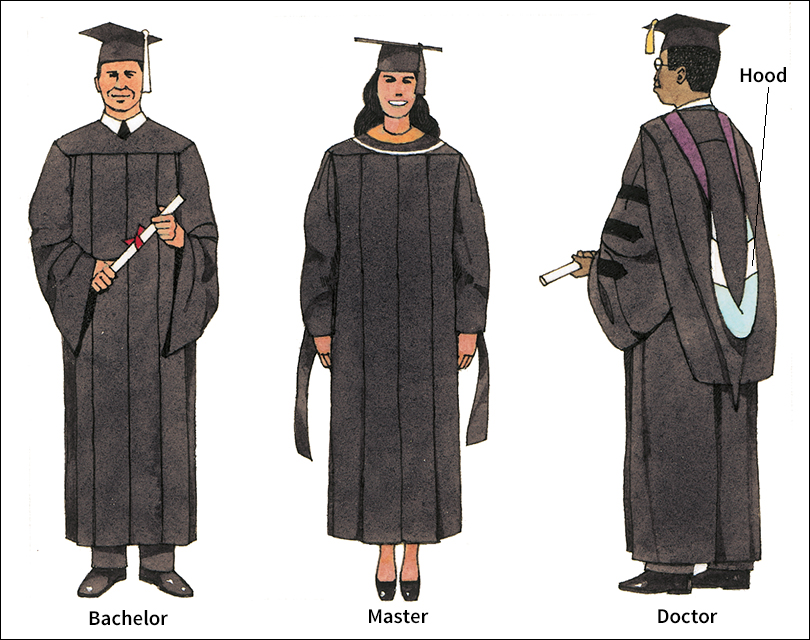Caps and gowns are the official and traditional costumes for students in many nations. In most cases, students wear caps and gowns only at graduation exercises and on special occasions. A student wears a full-flowing robe and a skullcap attached to a stiff square piece called a mortarboard. A tassel dangles from the center of the mortarboard. In addition to the cap and gown, a college graduate wears an academic hood that is lined with colored satin and trimmed with velvet.

Most collegiate caps, gowns, and hoods are black. The trimming and the cut of the robe and sleeves indicate various academic degrees. The color of the hood’s satin lining indicates the school that conferred the degree. The velvet trim on the hood indicates the graduate’s field of study. The tassel may be black or the color that represents the graduate’s field, and a doctor’s cap may have a gold tassel. Some schools have graduates change their tassel from the right side to the left after receiving their diplomas. In the United States, the Intercollegiate Commission set the standards for academic costume in 1894.
Doctoral degree robe.
A doctoral graduate wears a gown or robe, usually black, with full, round sleeves. The gown shows velvet facings on the front. Three velvet bars decorate the sleeves. The color of the velvet trim indicates the doctor’s field of study. A doctor wears a colorful 4-foot (122-centimeter) hood with velvet trim that is 5 inches (13 centimeters) wide.
Master’s degree gown.
A master’s degree graduate wears a gown with full-length square sleeves. A crescent-shaped panel hangs down from each sleeve. The gown has no velvet trim. The 31/2-foot (107-centimeter) hood has velvet trim that is 3 inches (8 centimeters) wide.
Bachelor’s degree gown.
A bachelor’s degree graduate wears a gown with pointed sleeves. It has no velvet trim. Women wear white collars. Bachelors wear hoods 3 feet (91 centimeters) long, with velvet trim 2 inches (5 centimeters) wide.
History.
During the 1100’s, men and women wore gowns and hoods as everyday clothing at early universities, initially to keep warm. Later, gowns became the official dress of academics (college students or teachers). Styles have changed over the years, but some universities, such as Oxford University, still have their students wear gowns and hoods. The costume implies that the students are individuals of learning, dignity, and maturity, who are not affected by passing fads and changing tastes.
Early American colleges and universities followed the same customs in regard to dress. American students liked caps and gowns as a simple, dignified, and economical dress for graduation ceremonies. Since 1900, caps and gowns have increased in popularity for use at high school and grammar school graduations. High school caps and gowns are available in many colors. Girls sometimes wear white gowns.
